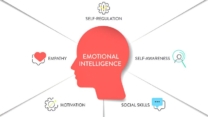
Your Topics Multiple Stories: The Strategic Framework That Transforms Content Creation
In an era where content saturation threatens to drown out even the most compelling messages, a revolutionary approach is reshaping how creators, educators, and businesses communicate: your topics multiple stories. This isn’t merely about producing more content—it’s about architecting narrative ecosystems where a single topic branches into multiple engaging storylines, each resonating with different audience segments while reinforcing your core message.
Whether you’re a content strategist seeking better ROI, an educator aiming for deeper student engagement, or a brand builder crafting memorable campaigns, understanding this multi-narrative approach can dramatically amplify your impact. Let’s explore how this framework works and why it’s becoming indispensable in modern communication.
Understanding the Your Topics Multiple Stories Framework
The concept of “your topics multiple stories” represents a paradigm shift from single-narrative content to a diversified storytelling ecosystem. At its foundation, this approach recognizes a fundamental truth: no single story can capture the full complexity of any meaningful topic or reach every member of your intended audience.
The Core Principle
Think of your topic as a diamond. A single photograph captures only one facet, but rotating the diamond reveals countless angles, each reflecting light differently. Similarly, your topics multiple stories involves:
- Identifying core themes within your subject matter
- Developing distinct narratives that explore different angles
- Tailoring each story to specific audience segments
- Maintaining thematic cohesion across all narratives
- Creating interconnections that deepen overall understanding
Why Traditional Single-Story Approaches Fall Short
Consider a business explaining its sustainability initiatives. A traditional approach might produce one comprehensive report. The multi-story framework instead creates:
- A data-driven case study for investors
- An emotional narrative featuring employee testimonials
- An infographic timeline for social media audiences
- A technical whitepaper for industry experts
- A community impact story for local stakeholders
Each narrative serves the same topic but reaches different audiences through their preferred lens.
The Strategic Advantages of Multiple Story Approaches

Implementing a multi-narrative strategy delivers measurable benefits across several dimensions. Let’s examine the concrete advantages backed by content marketing research.
Enhanced SEO Performance and Search Visibility
Search engines reward comprehensive topic coverage. When you develop multiple stories around a single topic, you naturally:
- Target diverse long-tail keywords that single articles miss
- Increase your domain authority on specific subjects
- Create internal linking opportunities that boost page rankings
- Generate more entry points for organic search traffic
| Content Approach | Average Keyword Rankings | Organic Traffic Increase | Engagement Duration |
|---|---|---|---|
| Single comprehensive article | 5-10 keywords | Baseline | 2-3 minutes |
| Multiple stories framework | 25-40 keywords | 180-250% increase | 8-12 minutes |
Audience Segmentation and Personalization
Different audience segments consume content differently. The multi-story approach allows you to meet people where they are:
- Visual learners receive infographic-style narratives
- Analytical minds get data-rich case studies
- Emotional connectors engage with personal testimonials
- Quick scanners appreciate bullet-point summaries
Extended Content Lifecycle and Repurposing Efficiency
Multiple stories create natural repurposing opportunities. A single research project can generate:
- A comprehensive long-form article
- A video documentary series
- Social media story snippets
- Podcast episode discussions
- Presentation decks for conferences
- Email newsletter series
Building Your Multiple Stories Strategy: A Step-by-Step Framework
Transitioning from single-story to multi-story content requires strategic planning. Here’s a proven framework for implementation.
Step 1: Conduct Topic Architecture Mapping
Begin by deconstructing your core topic into its constituent elements:
- Identify 3-5 main subtopics or angles
- Map emotional touchpoints within each angle
- Determine which perspectives are underrepresented
- Note potential controversy or debate areas
Example: For the topic “Remote Work Transformation,” your architecture might include: productivity metrics (data angle), work-life balance (emotional angle), technology infrastructure (technical angle), company culture evolution (organizational angle), and environmental impact (sustainability angle).
Step 2: Audience Persona Alignment
Match each story angle to specific audience personas:
| Story Angle | Target Persona | Preferred Format | Key Message |
|---|---|---|---|
| Productivity metrics | C-suite executives | Data visualization | ROI and efficiency gains |
| Work-life balance | Individual employees | Personal narratives | Quality of life improvements |
| Technology infrastructure | IT professionals | Technical guides | Implementation roadmaps |
Step 3: Develop Your Narrative Diversity Matrix
Ensure your stories vary across multiple dimensions:
- Tone: Analytical, inspirational, cautionary, celebratory
- Format: Written, video, audio, interactive
- Length: Quick reads, deep dives, micro-content
- Perspective: First-person, expert commentary, user-generated
- Temporal focus: Historical context, current state, future vision
Step 4: Create Interconnection Points
Multiple stories shouldn’t exist in isolation. Build bridges between narratives:
- Reference related stories within each piece
- Create a content hub that organizes all angles
- Develop a sequential reading path for deep learners
- Use consistent terminology and frameworks across stories
Real-World Applications Across Industries
The versatility of the multiple stories framework makes it applicable across diverse sectors. Let’s examine specific implementations.
Education: Deepening Student Comprehension
A history teacher exploring World War II might develop:
- A timeline narrative of major battles (chronological story)
- Personal diaries from soldiers on different sides (human story)
- Economic analysis of war costs and impacts (analytical story)
- Technological innovation stories (innovation narrative)
- Home front experiences from multiple countries (cultural story)
Students encounter the same topic through five distinct lenses, creating a comprehensive, memorable understanding that single-perspective teaching cannot achieve.
Business: Building Brand Authority and Trust
A SaaS company launching a new product utilizes multiple stories:
- The founder’s vision story: Why this product exists (brand narrative)
- Customer transformation stories: Before-and-after testimonials (social proof)
- Technical innovation story: The engineering behind the solution (credibility builder)
- Market gap story: Industry analysis showing the need (thought leadership)
- Competitive comparison story: Honest positioning (transparency narrative)
Healthcare: Patient Education and Engagement
A medical center explaining diabetes management creates:
- Medical explanation for newly diagnosed patients
- Day-in-the-life story from long-term patients
- Nutritionist’s guide to meal planning
- Exercise physiologist’s activity recommendations
- Mental health professional’s coping strategies
- Family member’s guide to providing support
Overcoming Common Implementation Challenges
While powerful, the multiple stories approach presents specific challenges that require strategic solutions.
Challenge 1: Maintaining Consistency Without Repetition
The Problem: Multiple stories risk becoming redundant or contradicting each other.
The Solution:
- Establish a core message document that all stories reinforce
- Create a story matrix tracking which points each narrative covers
- Use complementary rather than duplicate information
- Assign different story angles to different team members
Challenge 2: Resource Allocation and Production Time
The Problem: Creating multiple stories requires more initial investment than single pieces.
The Solution:
- Start with 3 core stories rather than attempting comprehensive coverage immediately
- Leverage AI tools for initial drafts and ideation
- Repurpose existing content by reframing angles
- Build story templates that streamline production
Challenge 3: Avoiding Audience Confusion
The Problem: Too many stories can overwhelm rather than enlighten audiences.
The Solution:
- Create clear navigation and categorization systems
- Use story sequencing to guide audience journeys
- Provide “start here” recommendations based on user profiles
- Develop summary pieces that tie multiple stories together
Measuring Success: Key Performance Indicators
To ensure your multiple stories strategy delivers results, track these essential metrics:
- Engagement diversity: Are different audience segments consuming different stories?
- Topic authority: Are you ranking for more keywords related to your core topic?
- Content depth score: How many interconnected pieces exist per topic?
- Audience journey completion: Are users consuming multiple related stories?
- Conversion attribution: Which story types drive most conversions?
The Future of Multi-Narrative Content
As AI and personalization technologies advance, the multiple stories approach will become increasingly sophisticated. Emerging trends include:
- Dynamic story assembly: AI automatically selecting story combinations based on user behavior
- Interactive branching narratives: Users choosing their own story paths through topics
- Augmented reality story layers: Physical environments triggering location-specific narratives
- Collaborative storytelling: Audiences contributing their own stories to your topic ecosystem
Conclusion: Embrace the Multi-Story Advantage
The your topics multiple stories framework represents more than a content strategy—it’s a fundamental recognition that complex topics demand multifaceted exploration. In a world drowning in single-perspective content, those who master multi-narrative storytelling will capture attention, build deeper connections, and establish lasting authority.
Start small: identify your most important topic and commit to developing three distinct stories around it. Analyze which resonates with different audience segments. Refine your approach based on data. Over time, you’ll build a content ecosystem that serves diverse needs while reinforcing your core message.
The question isn’t whether to adopt multiple story approaches—it’s how quickly you can implement them before your competition does. Your topics deserve multiple stories. Your audiences deserve multiple entry points. Your message deserves multiple opportunities to resonate.
Begin today, and watch as your single topics transform into rich narrative landscapes that engage, educate, and inspire across every dimension of your audience.












